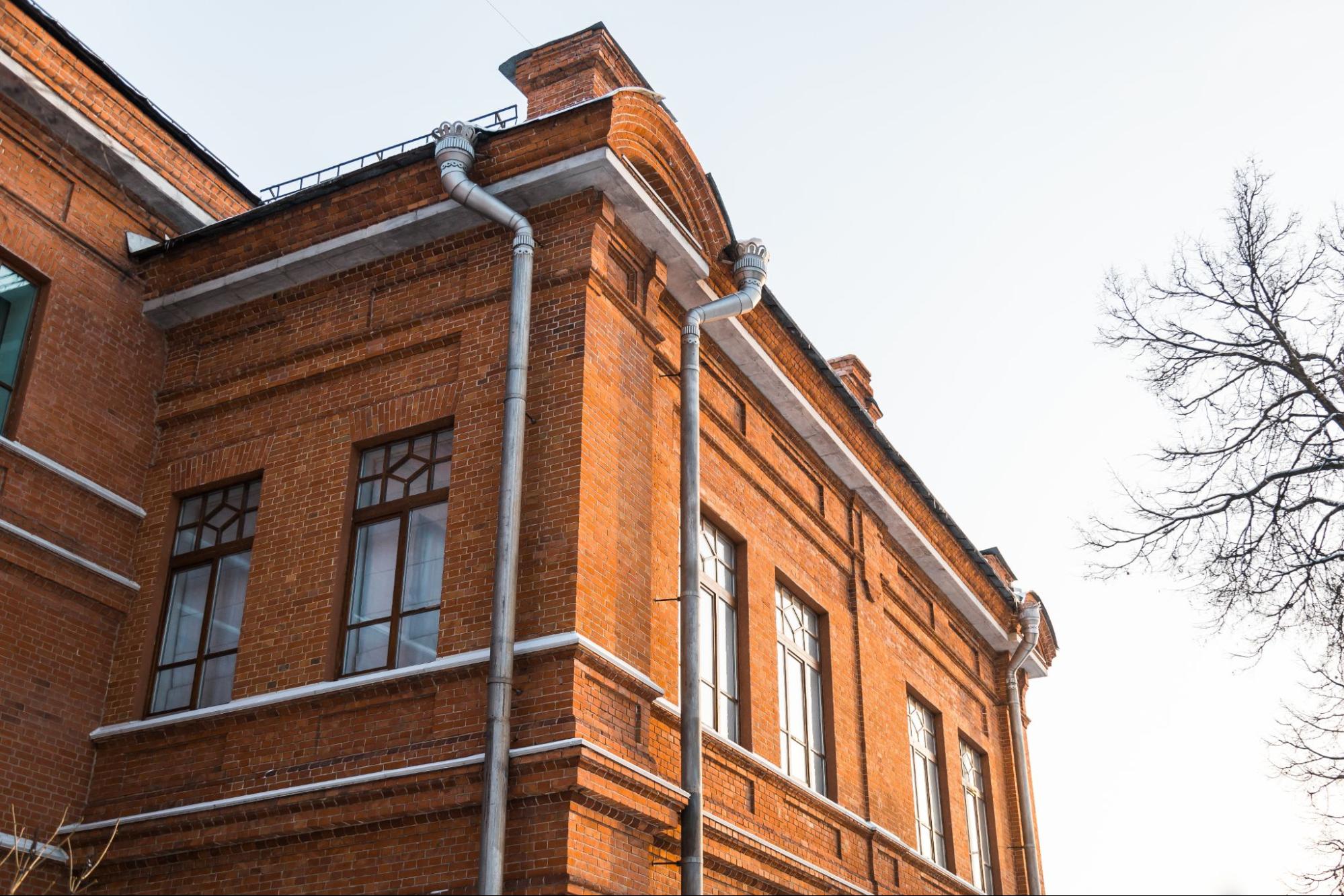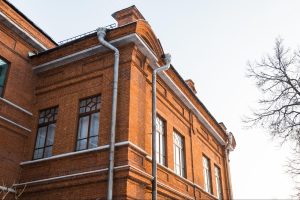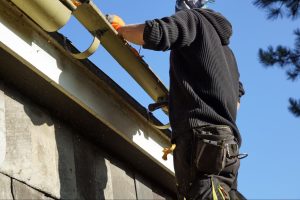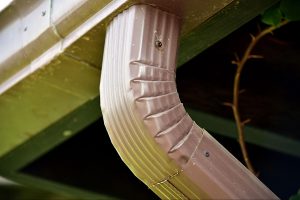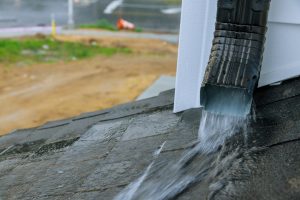Business owners constantly juggle property maintenance costs; gutters are often overlooked until problems arise. Commercial gutters protect buildings from water intrusion, foundation damage, and costly repairs that disrupt operations. Their installation requires careful consideration of materials, labor, design, and ongoing upkeep. Knowing what drives these costs helps property owners make informed, budget-smart decisions.
Commercial Gutter Material Costs
The type of material is the single most significant factor in pricing. Each option varies in cost, durability, and appearance, which affects long-term value. Some materials are affordable but less durable, while others offer longevity at a higher upfront price. Choosing the right option depends on property needs and budget priorities.
Aluminum Gutters
Aluminum gutters are cost-effective, lightweight, and resistant to rust. They are simple to install, which keeps labor costs lower than heavier metals. Aluminum comes in different colors, making it suitable for visible areas of commercial properties. However, aluminum is prone to dents in high-impact environments, such as areas with frequent storms. While it offers a good balance of affordability and performance, business owners may need to replace sections sooner than more durable materials.
Galvanized Steel
Steel gutters are stronger than aluminum and better suited for wide roof spans. Their rigidity handles high water volumes, vital for large warehouses or office complexes. They require skilled installation, which increases labor costs compared to lighter options. Over time, steel can corrode if protective coatings wear down. Despite this, many property managers select steel for its toughness in demanding climates. It provides a middle ground between affordability and long-lasting reliability.
Copper Commercial Gutters
Copper gutters deliver strength and aesthetics, making them popular for historic or high-end buildings. They resist corrosion naturally, meaning they can last decades with minimal maintenance. Their striking appearance also improves property curb appeal, which benefits retail and client-facing locations. The downside is their high upfront price, which may not suit every budget. Skilled installation is required, adding labor expenses on top of material costs. Still, copper gutters are considered a long-term investment rather than a short-term fix.
Vinyl Gutters
Vinyl gutters are the most affordable option available for commercial properties. They are lightweight and easy to install, which makes them attractive for businesses on tighter budgets. However, they do not perform well in areas with extreme temperatures, where they can warp or crack. Their lifespan is far shorter than that of metal alternatives, leading to more frequent replacements. Many property owners use vinyl temporarily until funds allow for stronger materials. While cheap upfront, vinyl often costs more over time due to frequent maintenance.
Commercial Gutter Size and Capacity
Gutter size directly impacts cost because larger systems require more material and labor. Commercial properties often need wider gutters to handle heavy water flow from expansive rooflines. Downspouts must match gutter capacity to prevent overflow and flooding issues. In some cases, custom fabrication is necessary, which increases installation costs.
Standard vs. Oversized Commercial Gutters
Standard commercial gutters typically measure five to six inches wide. Oversized options, like seven or eight-inch gutters, are essential for larger roofs. While oversized gutters cost more upfront, they prevent long-term damage by effectively managing heavy rainfall. These systems also reduce stress on joints, which helps extend their lifespan. Choosing the right size avoids frequent repairs and replacements. Contractors usually recommend oversized gutters for industrial or multi-level properties.
Commercial Downspout Sizing
Downspouts control how quickly water exits a gutter system, making sizing crucial. Smaller downspouts paired with large gutters often create bottlenecks that cause overflow. Larger downspouts cost more but provide smoother water flow, especially in taller buildings. Extended lengths for high-rise properties also increase costs. Contractors usually match gutter size with proportional downspouts to keep performance consistent. Skimping on downspouts can undermine even the best gutter system.Custom Commercial Gutter Fabrication
Some commercial buildings require custom gutter systems to fit unique rooflines. Complex roof angles, curves, or multi-level structures often make prefabricated options impractical. Custom fabrication involves higher labor costs because installers must build gutters on-site. Specialized tools and equipment also add to the total expense. While more expensive, custom systems prevent drainage failures that standard options cannot address. Property managers see this as an investment in preventing recurring repair bills.

Commercial Building Design Costs
The architecture of a property directly influences gutter installation costs. Roof pitch, height, and structural complexity increase the time and resources needed. Contractors adjust bids based on accessibility and safety concerns. These building-related factors can create vast cost differences across projects.
Roof Pitch and Water Flow
Steeper roofs shed rainwater quickly, putting pressure on gutters. They often require larger systems that cost more to install. Labor expenses also rise because installers face more safety risks on steep pitches. Shallow roofs may reduce material costs, but still need careful drainage design. Both extremes affect pricing differently. Contractors analyze roof pitch closely before finalizing estimates.
Multi-Level Commercial Roofs
Commercial properties with multiple roof levels require complex gutter layouts. Each level often needs its own drainage solution, which increases material use. Installers must connect multiple sections carefully to prevent pooling. Extra connectors and downspouts add to expenses. Labor also increases because of the time needed for detailed installation. That makes multi-level properties more expensive than single-level designs.
Height and Accessibility Challenges
Tall buildings increase installation costs due to access challenges. Contractors often need lifts, scaffolding, or safety gear, which adds rental fees. Limited property access can also slow crews down, extending labor hours. Dense urban areas may require special permits for equipment setup. These conditions make gutter installation more costly for taller or hard-to-reach buildings. Business owners should expect higher bids when accessibility is limited.
Labor Costs for Commercial Gutter Installation
Labor is one of the most significant cost factors in gutter projects. Skilled crews charge more but reduce long-term issues through quality work. Local wages, project duration, and contractor expertise all affect pricing. Comparing labor rates is essential for accurate budgeting.
Local Labor Market Rates
Labor prices vary depending on region, population density, and demand. Urban areas typically have higher labor costs than rural locations. Seasonal demand can also drive up rates, especially during rainy months. Contractors may increase bids when competition for crews is high. Business owners should gather multiple quotes to understand fair pricing. Market conditions often explain vast differences in estimates.
Contractor Experience and Crew Size
Experienced gutter contractors charge more but complete projects with fewer mistakes. Skilled crews also work faster, which may reduce overall hours billed. Larger crews can finish jobs quickly but may raise daily labor charges. Smaller crews may take longer, increasing labor hours. The balance between speed and quality affects the final price. Hiring experienced teams usually prevents expensive rework.
Project Scheduling and Duration
The length of a project has a direct impact on cost. Weather delays, equipment issues, or site complications can extend installation time. Night or weekend work often comes with premium charges. Careful scheduling helps avoid these added expenses. Projects completed efficiently save both time and money. Contractors usually build in time allowances for potential delays.
Upgrades and Features for Commercial Gutters
Additional features improve gutter performance but increase installation costs. Business owners often weigh convenience and protection against upfront expenses. Enhancements can reduce long-term maintenance while enhancing safety and curb appeal. Some upgrades are climate-specific, while others are chosen for visual impact.
Commercial Gutter Guards
Gutter guards stop leaves and debris from clogging gutters. They reduce the need for frequent cleaning, which saves on maintenance. Guards also prevent water overflow, which protects siding and foundations. Although guards add to initial costs, they extend system life and improve efficiency. Businesses near wooded areas benefit most from this feature. Over time, guards often pay for themselves through reduced service needs.

Heated Gutter Systems for Winter
In cold regions, heated systems prevent ice dams from forming. They use electric cables to melt snow and ice, keeping water flowing. Installation is more expensive because of electrical components, and ongoing energy use also adds to operating costs. However, they protect against roof leaks and structural damage. For businesses in snowy climates, heated gutters reduce safety risks and prevent costly repairs.
Decorative Gutter Options
Some businesses choose decorative gutters to improve their properties’ appearance. Custom colors, finishes, or ornamental hangers enhance visual appeal. These upgrades raise both material and labor expenses. Decorative systems are standard in client-facing properties like retail centers or office parks. While not essential, they add branding and curb appeal value. Owners often weigh this cost against potential customer perception.
Regional and Environmental Gutter Costs
Local conditions heavily influence the price of gutter installations. Weather patterns, supply chains, and municipal rules all play a role. Contractors adjust recommendations to suit environmental demands, and business owners must consider these factors during planning.
Commercial Gutters in Rainy Regions
Properties in areas with heavy rainfall need larger gutters. Standard systems cannot handle the volume, leading to overflows. Coastal climates often require corrosion-resistant materials like copper or aluminum. Snow-prone regions also demand systems that can withstand ice loads. These environmental needs raise both material and labor expenses. Location-driven choices prevent costly structural damage.
Material Supply and Availability
Regional availability impacts the cost of gutter materials. Certain metals are harder to source in some areas, driving up prices. Remote locations may add shipping fees to overall expenses, which contractors pass on to property owners. Supply chain issues can also create delays in project scheduling. Availability often dictates which material becomes the most practical option.
Permits and Local Regulations
Many municipalities require permits for commercial gutter installations. Permit fees add directly to the cost of projects. Local codes may also dictate material type, size, or placement. Contractors must follow these rules, which can increase labor and planning time. Failing to comply with regulations often results in fines or rework. Owners should confirm requirements before approving a bid.
Long-Term Value of Commercial Gutters
Installation costs are only part of the investment. Long-term performance determines overall value for property owners. Proper maintenance prevents premature replacements and costly building damage, and gutter systems that last longer save money over time.
Routine Commercial Gutter Cleaning
Regular cleaning is essential to keep gutters working properly. Commercial properties usually hire professional crews due to safety concerns. These recurring costs prevent clogs that lead to water damage. Inspections during cleaning also identify minor problems early. Business owners often schedule cleanings seasonally, especially after storms. Preventive care extends the lifespan of the entire system.
Repairs and Replacement Frequency
Repair costs depend on the durability of the chosen material. Vinyl often requires replacement within a few years, while copper can last decades; steel and aluminum offer moderate durability with occasional patching. Frequent repairs raise long-term expenses even if upfront costs are low. Choosing stronger materials reduces the need for early replacements. This balance often saves more in the long run.
Savings from Preventing Water Damage
Proper gutters protect roofs, siding, and foundations from water intrusion. Without them, properties face mold, cracks, and structural deterioration. These issues lead to costly repairs that exceed installation expenses. Insurance claims for water damage can also raise premiums. Effective gutter systems prevent these financial risks. Owners save money while protecting their property investment.
Budgeting for Commercial Gutter Installation
Planning makes managing gutter installation costs easier. Business owners need to account for both visible and hidden expenses. Comparing contractor estimates ensures more accurate budgeting. Preparing financially reduces stress during the installation process.
Comparing Contractor Bids
Requesting multiple bids gives owners a clear picture of pricing. Contractors may include different details in their proposals, such as warranties or cleanup services. Reviewing breakdowns prevents surprises during installation. Business owners should ask about labor, materials, and timeframes. Comparing offers side by side highlights both value and reliability. This process helps owners avoid overpaying.
Hidden Commercial Gutter Costs
Unexpected costs often increase final project expenses. Permit fees, disposal of old gutters, and equipment rentals may not appear in initial quotes. Weather delays can also extend labor hours. Budgeting with a small cushion prevents financial strain. Asking contractors upfront about hidden charges provides clarity. This proactive step reduces disputes later.
Balancing Cost and Long-Term Value
Cheap materials save money at first, but cost more over time. Frequent repairs or replacements quickly add up. Investing in stronger systems often proves less expensive in the long run. Owners must weigh short-term savings against property protection. Contractors can guide businesses on which options deliver the best balance. Long-term thinking protects both budgets and buildings.
Shield Your Investment With Commercial Gutters
Every building tells a story of care, stability, and foresight; gutters are part of that story. Ignoring them leaves properties exposed to water damage that drains resources and credibility. Commercial gutters serve as a frontline defense, protecting the structure and the business it supports. Choosing the right system today means avoiding preventable costs tomorrow and keeping your investment strong for years.
Discover insights that protect your property. Explore the Quality Rain Gutters, Inc. blog for expert guidance on commercial gutters.
